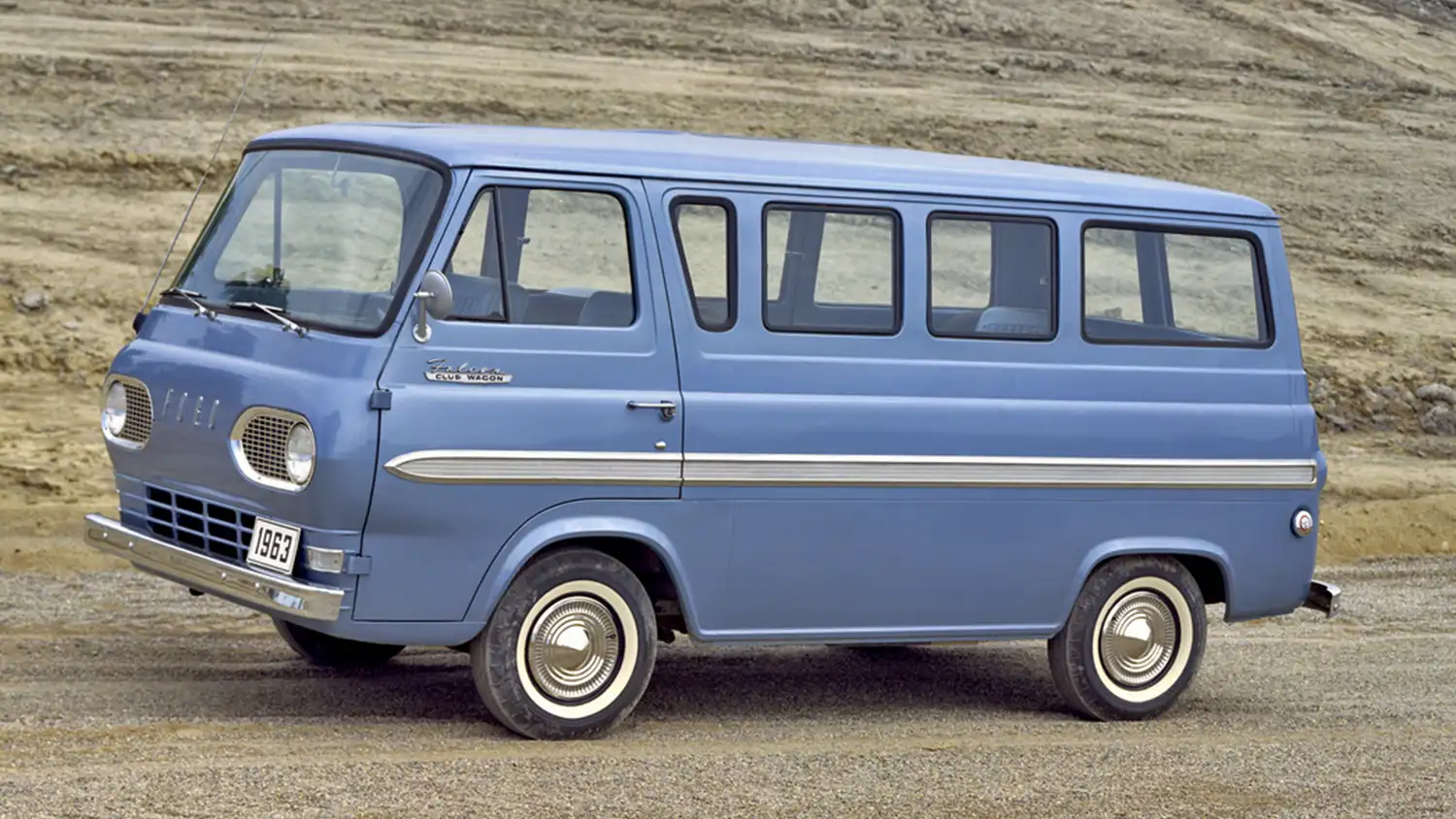
The 1963 Ford Falcon Club Wagon is a truly special vehicle. It is a key player in the history of vans. It was a forward-thinking design. This van pioneered a new way to move people. It was part of the Econoline line. The Falcon Club Wagon was built for families and businesses. It was a very versatile machine. This vehicle was a major departure for Ford. It created a whole new market.
A Revolutionary Design
This was a major shift from traditional vehicles. The engine was placed between the front seats. This gave the van a flat nose. This is called a cab-over-engine design. This layout maximized interior space. It made the van very compact on the outside. But it was very roomy inside. It was an incredibly smart design. It was built for efficiency. The design was both practical and innovative.
The Falcon Club Wagon Concept
The Falcon Club Wagon was a game changer. It offered a great blend of function and form. It was sold as a passenger van. This van could seat many people. It was a very popular choice for groups. It was used by scouts and clubs. It could also haul a lot of cargo. This versatility was a huge draw. It made the vehicle a true workhorse.
Power and Performance
The 1963 Ford Falcon Club Wagon had a modest engine. It was an inline-six. The base engine was a 144 cubic-inch six-cylinder. An optional 170 cubic-inch six was also available. This was a very simple design. The engine was placed between the seats. It was a very reliable motor. The van was not built for speed. It was built for work. The engines provided steady power. It was enough to get the job done.
The Engine`s Role
The inline-six was a proven design. It was a dependable workhorse. The engine had a three-speed manual transmission. A three-speed automatic was optional. The engine’s position made it easy to service. The Falcon Club Wagon was easy to maintain. It was a very practical vehicle. The engine was tough and durable. This was a car that lasted for years.
Simple Yet Functional Interior
The interior of the Club Wagon was simple. It was very utilitarian. The seats were vinyl. The floor had a full-length mat. The cabin had dual sun visors. It also had coat hooks. It was a no-frills interior. The design was all about function. It was built to be easy to clean. This was a very practical space. The interior was also very spacious.
Inside the Falcon Club Wagon
The cabin was a very open space. It could be configured in many ways. You could add rear seats for passengers. You could also remove them for cargo. The windows provided a lot of light. This made the interior feel even larger. The design was all about maximizing space. It was a very clever use of a small footprint.
A Lasting Legacy
The 1963 Ford Falcon Club Wagon began a great legacy. It was a precursor to modern vans. It paved the way for minivans. Its simple design is still influential today. This van is a true icon. It is a beloved classic. It represents a different time in automotive history. This car is a true piece of American ingenuity.
Summary
The 1963 Ford Falcon Club Wagon was a revolutionary vehicle. It was a part of the first-generation Econoline series. Its pioneering cab-over-engine design maximized interior space. It was powered by reliable inline-six engines. The van was very versatile and was built for both passengers and cargo. Its simple, functional interior and innovative design made it a lasting icon and a precursor to the modern van.
Disclaimer: This article provides historical information about the 1963 Ford Falcon Club Wagon and is not a review of a specific vehicle.
Souce: Ford Heritage Vault
